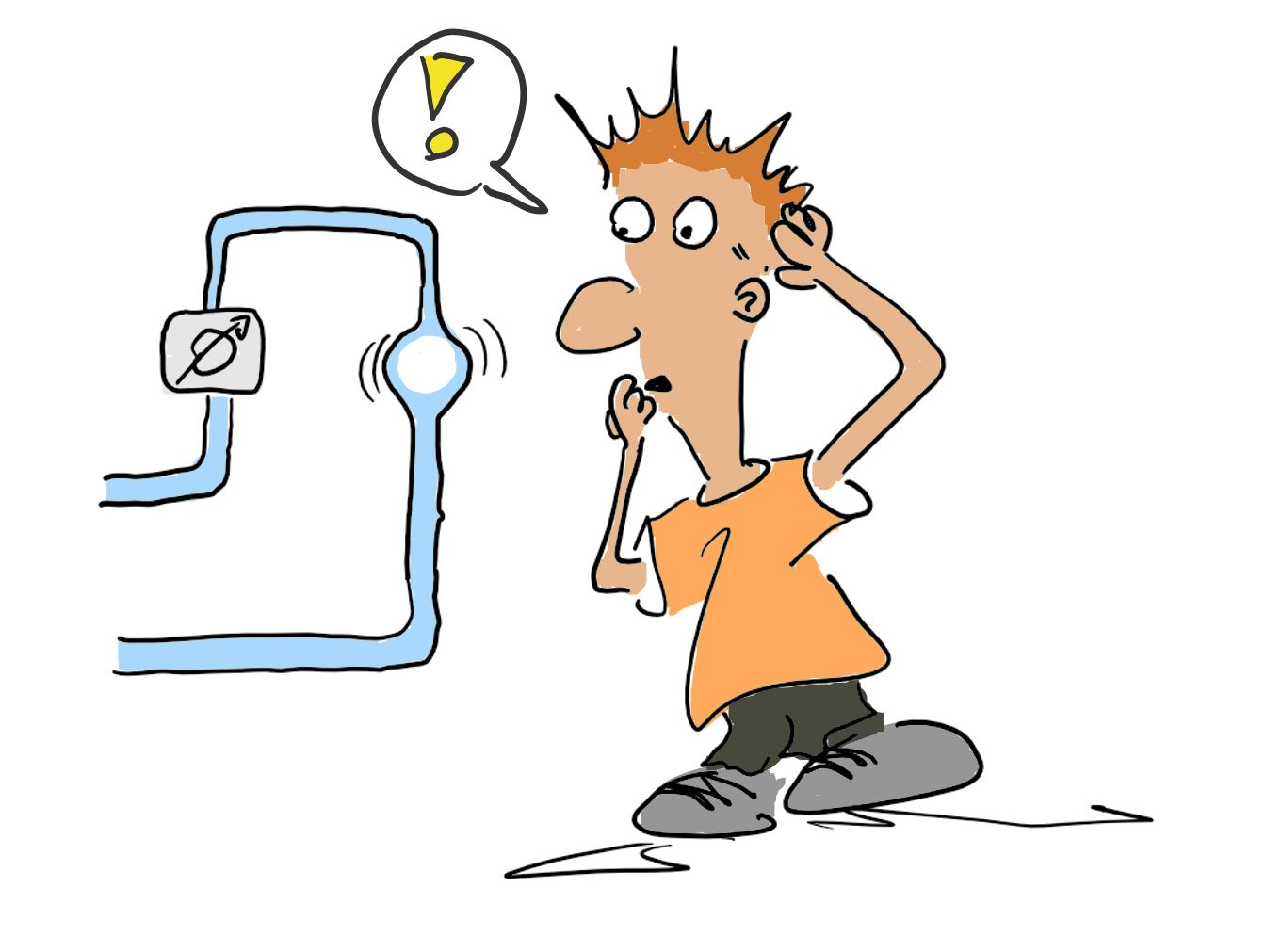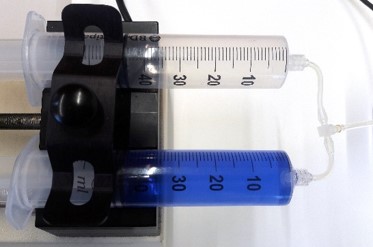Application note
Introduction
This application note shows how the Pulsed Flow Sensor (PFS) behaves if air bubbles are trapped in the liquid, or if only air passes through the sensor. An ideal liquid flow sensor would only measure liquid and neglect air/gases completely. The following experiments show the behavior of the PFS in this context.
Used Material
+ Pulsed Flow Sensor V3-B1
+ PFS controller with user Interface
+ Nordson EFD55ml pressurized cartridge with piston
+ Syringe Pump
Sensor specifications
+ Flowrate: 3 – 30 ml/min
+ Response time: 1 ms
+ Calibration media: water
+ Sensor principle: differential-pressure flow sensor

Experiment 1 - Moving pure water and pure air through the PFS-V3 sensor
Generally the PFS just measures the real flow of a liquid (red line). If air flows through the sensor at the specified flowrates below 30 ml/min, the sensor does not notice it at all. At higher flowrates of air up to 500 ml/min, the PFS reads a signal of up to 4.3% of the actual air volume.

Experiment 2 - Flow out of a pressurized cartridge
In some dispensing setups, the pressure drop over the flow sensor is given. Therefore a setup was tested where the fluid flows from a pressurized reservoir through the sensor to the outside. For this test, the Nordson EFD 55 ml cartridge with an air piston was used. The preset pressure was 0.05 bars.
Water
The flow of water reached 27 ml/min for about 124 Seconds until the cartridge was empty (Figure 2).
Air
Because of the much lower resistance, the air reached a flow rate of about 470 µl/sec and the cartridge was emptied within 7 seconds. The sensor monitored the air as 1.8 ml of liquid, which equals about 3% of the actual air volume.
Conclusion
We conclude that in a setup with preset pressure, the PFS produces some signal from the air flow. At 470 ml/min (and ambient pressure at the outlet) it is about 3% of the actual air volume.
Experiment 3 - Creating a mix of air and water
To simulate a real situation, where air is trapped in the flow channel towards the sensor, a syringe pump with two syringes was used.
Only water
In a first step only the syringe with water was connected to the PFS (water was colored for better visibility). 40 ml of water were dispensed through the sensor with a volume flow rate of 15 ml/min. The measured flow shows irregularities for every turn of the (somewhat worn) syringe pumps spindle. Apart from that, the flow is linear.

Water and Air
In a second setup, two equal syringes were mounted. One syringe with 40 ml of water and one with 40 ml of air. The syringe pump was driven at the same speed of 15 ml/min per syringe.

The sensor reads
In the beginning we see a slower rise of the flow, due to the compressibility of the air in the second syringe. When an air bubble passes the sensor, the flow signal drops rapidly. Because of the low resistance of air in the sensor, the flow accelerates until the next segment of water hits the sensors restrictor, produces a flow peak and slows the flow down again. This pattern repeats itself throughout the whole measurement.

At the end we read the measured volumes:
only water |
water and air |
difference |
|
Run 1 |
40237 µl |
40879 µl |
1.60% |
Run 2 |
40302 µl |
40699 µl |
1.00% |
